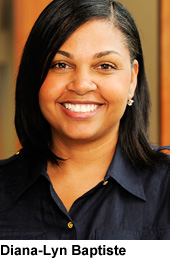Novice nurse leaders need paths to follow, learning from those who have done it before.
 Appointed president of an STTI chapter needing revitalization, the author relies upon mentors and proven leadership models—and teamwork—for turnaround success.
Appointed president of an STTI chapter needing revitalization, the author relies upon mentors and proven leadership models—and teamwork—for turnaround success.
The term leadership is often used broadly and can apply to many areas in the nursing profession. The American Nurses Association’s Nursing: Scope and Standards of Practice states, “All professional nurses are expected to engage in professional role activities, including leadership, appropriate to their education and position.” As a novice nurse in the late 1990s, my understanding of leadership was limited to roles such as nurse manager, director of nursing, or other management position synonymous with leading. Over the years, l learned through clinical and educational experiences that leadership is not always titled, and it comes in many forms. After studying concepts of nursing leadership, I realized that all nurses are leaders. In addition to influencing positive patient outcomes, we lead in clinical practice, research, education, and health policy.
 Recent experience
Recent experience
When I was appointed president of Nu Beta Chapter in 2015, I was charged with helping to carry out the mission of the Honor Society of Nursing, Sigma Theta Tau International (STTI) by providing leadership to a board of 28 officers and more than 600 active chapter members. Nu Beta Chapter was chartered at Johns Hopkins School of Nursing in 1992.
For a couple of decades, membership had increased each year but in recent years had begun to decline. From 2014 to 2015, several chapter board members from the Johns Hopkins School of Nursing had departed, and no formal election had been held to replace them. The decrease in board members led to fewer chapter meetings, social events, induction ceremonies, and member communications. In leading the transition from one chapter administration to the next, I worked with newly elected board members who, like me, were new to board leadership and excited to get things moving again.
With priorities of growing membership, engaging members, and increasing member retention, we reviewed as a team the mission and vision of STTI and employed strategies to assure that all operations, activities, and future endeavors were in alignment with those objectives. Bimonthly, the board consulted with chapter managers at STTI headquarters. Thus informed, the leaders of Nu Beta Chapter focused member communications and activities on three values—research, scholarship, and service.
To revitalize our chapter, we implemented three strategies for increasing recruitment of nurse leaders, engaging and retaining current members, and promoting knowledge, research, and scholarship. The strategies were as follows: 1) increase use of social media and The Circle, STTI’s online community; 2) schedule activities to promote networking, scholarship, and continuing education; and 3) lead community service events. We increased the number of nurse leader applicants by collaborating with chief nursing officers, directors, and unit managers of our six Johns Hopkins affiliate hospitals, asking them to nominate candidates for nurse leaders. As a result, we increased chapter membership and retention and, to become a chapter-at-large, have initiated a chapter amendment application to add all six sites.
Models matter
As a doctorally prepared nurse, I’m aware that there is a science behind everything we do. Theoretical models and conceptual frameworks, as well as translational models and frameworks, are used as guiding principles to successfully implement and sustain change. I remember learning during my BSN education about Lewin’s Change Theory model and the three stages it identifies for moving forward with change, whether that change is related to behavior or process. In taking on the responsibility of revitalizing Nu Beta Chapter, I recognized it was necessary for the chapter’s board members and me to be thoughtful, organized, and strategic in achieving our goals, but I wanted additional leadership guidance. After several days of searching for articles on leading change processes, I stumbled across Havelock’s Theory of Change. Like Lewin’s theory, Havelock’s theory provides guidance for implementing change in steps, employing a logical path. To create a process for flow, organize workflow, and use innovative methods for chapter operations, we implemented all six steps of Havelock’s theory.
As suggested in my opening paragraph, there was a time in my life when I believed leadership was synonymous with success. I have found that it’s often the opposite. I’ve learned more from my missteps than my successes. Through hardships—some call it the “School of Hard Knocks”—I learned that mentorship is a must! A developing nurse leader needs a path to follow, learning from someone who has done it before. I began reaching out to other chapter leaders, regional coordinators, and past presidents. I found it extremely helpful to speak with nurse leaders who were willing to share stories about their own hardships, perceived failures, and successes. I learned from them that, although leading change is uncomfortable, it’s necessary.
Dark night, bright idea
Inspiration comes in many ways—from people, quotes, articles, and books, to name a few. Nurse leaders, colleagues, students, and patients have inspired me. Strangely, my inspiration often comes in the middle of the night—during those sleepless nights when I’m awake at 3 a.m. for what seems like absolutely no reason. My mind may be racing about—“Did I finish this? Did I do that?” Then it happens: My brain comes up with a bright idea for a project, a research question, or perhaps a solution to a problem. Whatever it may be, the idea inspires me, suggests a hunch, and motivates me to move forward.
While attending a leadership academy in 2015, I heard a nationally known nurse leader restate in her keynote Thomas Edison’s well-known quote: “A vision without execution is just a hallucination.” I could not agree more. As I reflected on that statement afterward, I realized that, before attending the academy, I had spent a lot of time dreaming—“hallucinating”—about innovations, research, and scholarship instead of moving into action. At the academy, I learned that putting a plan into action requires a lot of time, patience, and mentoring, as well as a belief you can actually make it happen.
Don’t get me wrong; dreaming is good and important. Depending on time, resources, and appropriateness, however, fulfillment of every dream isn’t feasible. Nevertheless, write down your dreams, talk about them, and share them with those who can provide further insight. A vision is a good start to a new endeavor or innovation. Isn’t that how it all starts?
Claim your power
Successful change and leadership require teamwork. I know I’m “preaching to the choir,” but it can’t be overstated. We need to re-emphasize from time to time that we don’t have to go it alone. I often feel uncomfortable delegating things to others that I can do myself and have felt the need to apologize for leading by saying things like, “I’m sorry, but I was asked to take the lead on this project.” I think I felt that way because I hadn’t held a formal leadership position.
But I’ve learned that people are eager to help, especially if they realize they will learn from the experience. And I’ve learned that I should never apologize for earning an opportunity to better myself or create positive change for others.
Barbara Mikulski, a U.S. senator from the state of Maryland, says, “Claim your power” (personal communication, 2016), and she advises, never apologize for who you are or what you do. Patricia Davidson, PhD, MEd, RN, FAAN, dean of Johns Hopkins School of Nursing, and members of her leadership team have reinforced the same message for me. I’ll be forever grateful for these lessons and will keep them in mind as I continue developing my leadership skills.
I urge all nurses to practice the basic tenets of nursing leadership, including role modeling, mentoring, communicating effectively, managing conflict, encouraging role development, and practicing with innovation. Leadership is a journey, not a position. We learn from those we follow, and we learn from those who follow our lead. I look forward to continuing my leadership development and claiming my power as a scholar, educator, and nurse. RNL
Editor’s note: Diana-Lyn Baptiste presented “Application of a Framework for Increasing Nu Beta Chapter Membership, Engagement, and Retention” and “Establishing the Access in Minutes Team in the Adult Emergency Department” at the 44th Biennial Convention in Indianapolis, Indiana, USA. Click here and here for additional information about both presentations in the Virginia Henderson Global Nursing e-Repository.
Diana-Lyn Baptiste, DNP, MSN, RN, is assistant professor of nursing and president of Nu Beta Chapter at Johns Hopkins University School of Nursing. She is also a scholarly projects coordinator in the Department of Emergency Medicine at The Johns Hopkins Hospital in Baltimore, Maryland, USA.